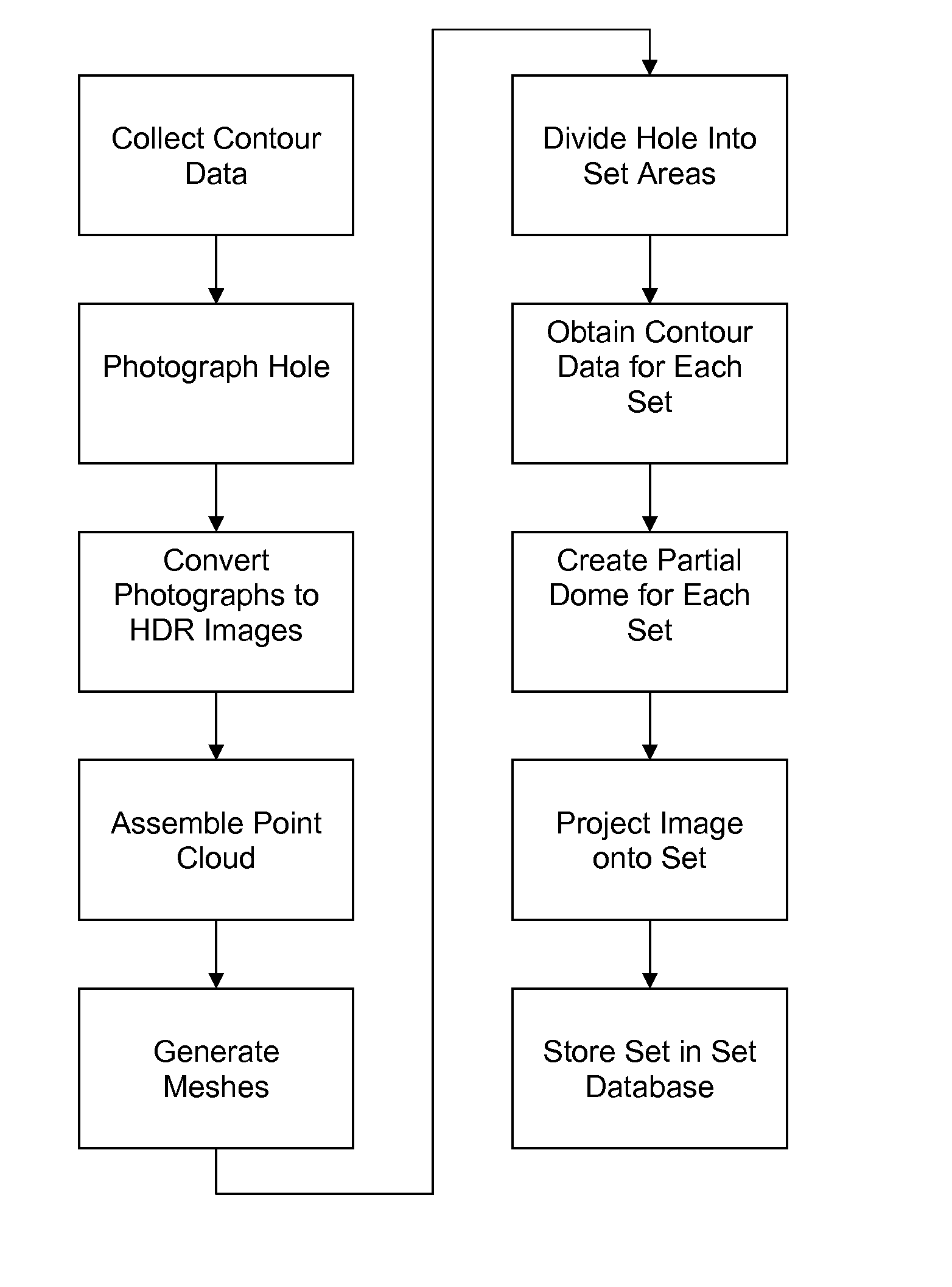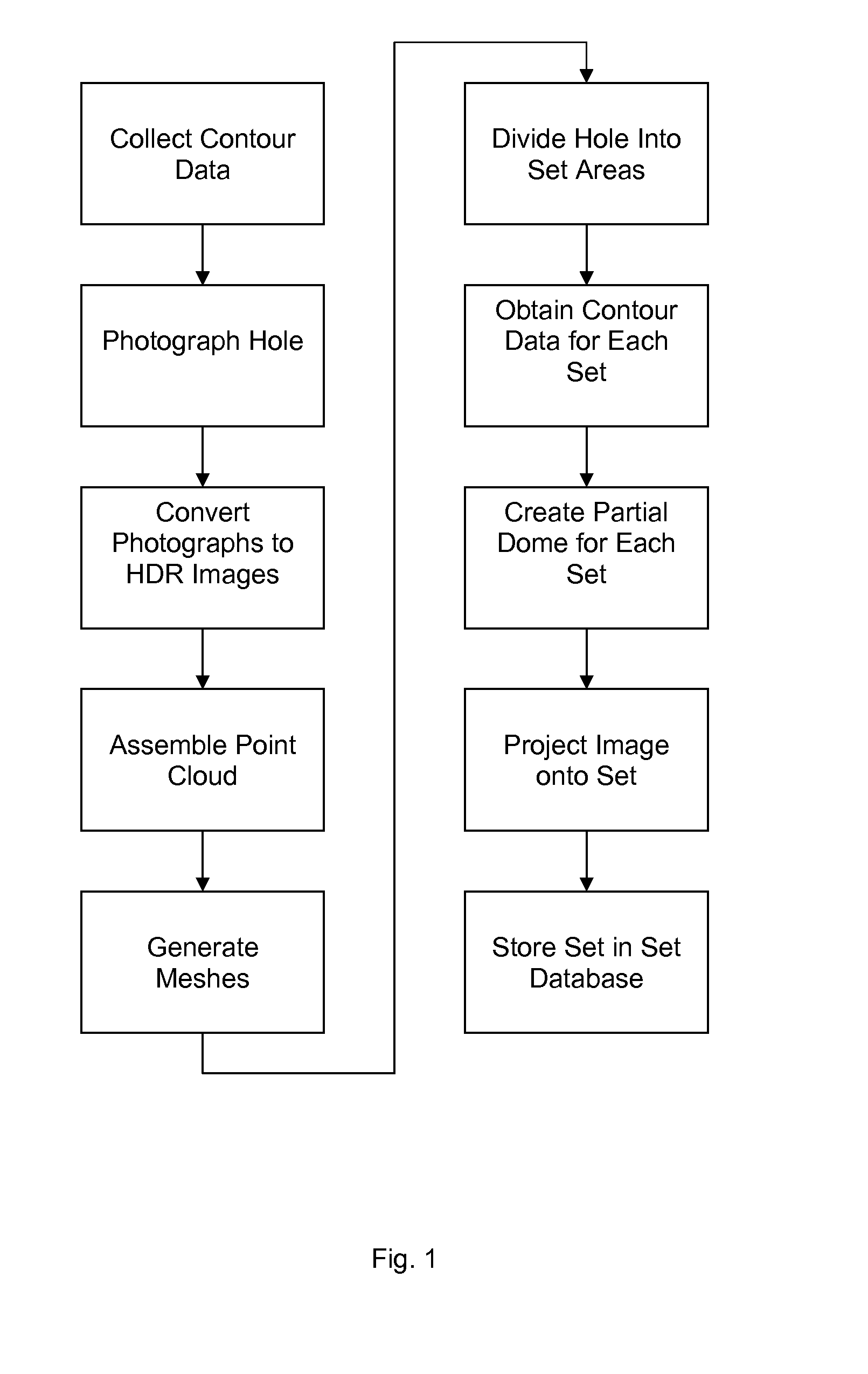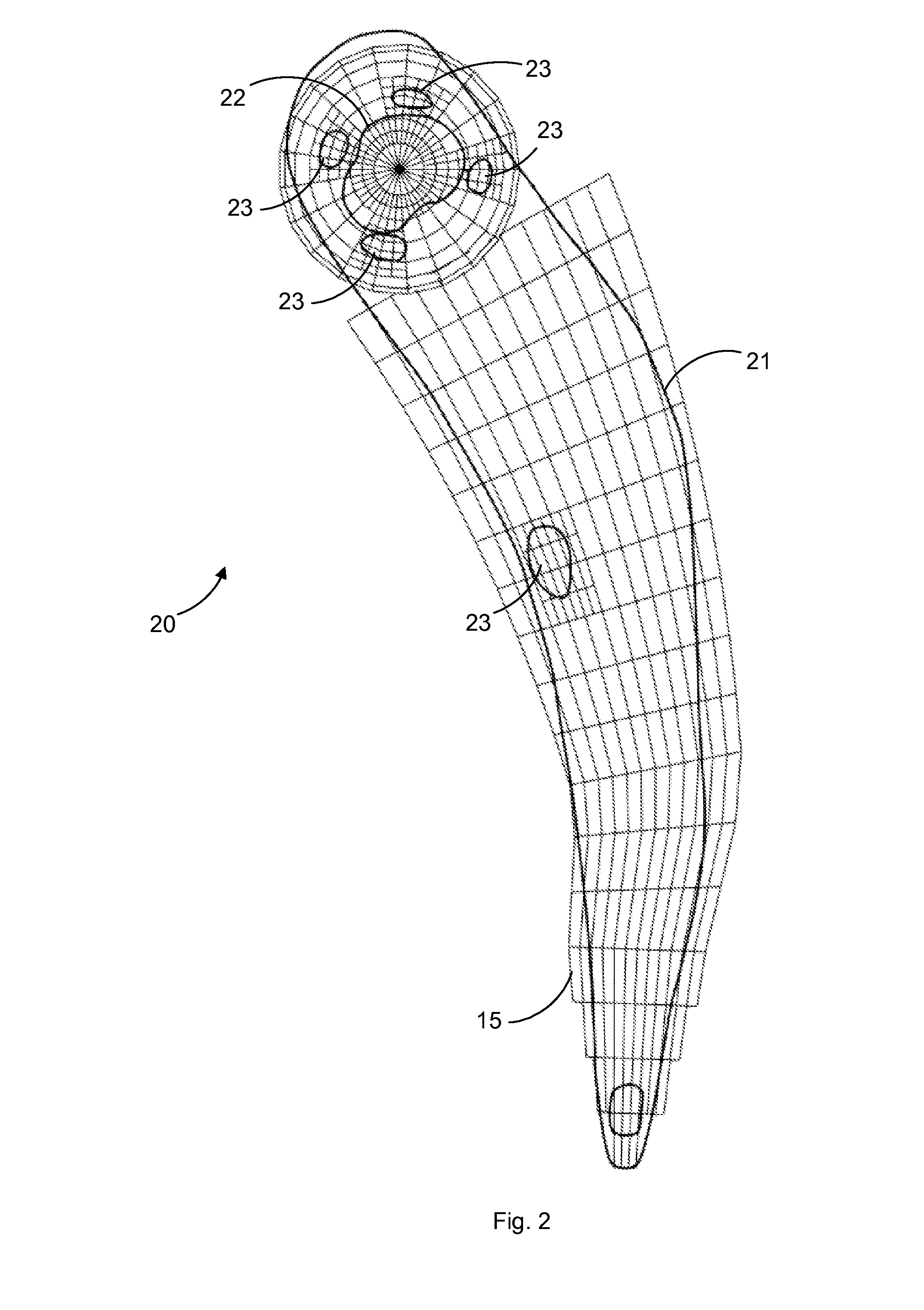Digital Rendering Method for Environmental Simulation
a digital rendering and simulation technology, applied in the field of video simulation production methods, can solve the problems of limited simulation realism, large load times, and existing rendering methods that require significant processing power to render a single, and achieve the effect of less processing power
- Summary
- Abstract
- Description
- Claims
- Application Information
AI Technical Summary
Benefits of technology
Problems solved by technology
Method used
Image
Examples
first embodiment
[0025]Referring to FIGS. 2-6, a set 11 is created for each collected image 12. In a first embodiment, the set 11 comprises a simulated camera 16 having a position and a heading, a backdrop 13, and one of the images 12 projected onto the backdrop 13. The virtual position and heading of the simulated camera are obtained from the geographical position and heading of the imaging device at the imaging device location where the image 12 was collected. Specifically, the imaging device's real-world or relative location and heading is transformed to a virtual position and heading in relation to the assembled contour data. The backdrop 13 comprises a mesh of polygons facing the simulated camera 16 and positioned a predetermined distance, with respect to the contour data, from the simulated camera 16. In one embodiment, the distance is determined by placing the center of the backdrop 13 at the intersection of the simulated camera's 16 heading and a predetermined hole 20 boundary (not shown). T...
second embodiment
[0028]In a second embodiment, the set 11 further comprises the contour data, comprising meshes and geometric primitives 25, for a discrete area 15 of the hole 20. The area 15 to be represented is determined using the geographic position and heading of the camera when the image was captured. The hole 20 may be divided into areas 15 of equal size, but preferably the areas 15 are scaled according to the level of detail expected in the area 15. For example, areas 15 may be larger near the tee box and in the fairway, where significant amounts of terrain are traversed with a single shot, and smaller and more numerous in sand bunkers 23 and on the green 22, where there is greater variation of ball location and a higher level of detail is needed. Further, preferably the hole 20 is divided in a substantially gridlike manner except for the green 22, which is divided substantially radially as shown in FIG. 2. The radial division allows the simulated camera to always point towards the hole wher...
PUM
 Login to View More
Login to View More Abstract
Description
Claims
Application Information
 Login to View More
Login to View More - R&D
- Intellectual Property
- Life Sciences
- Materials
- Tech Scout
- Unparalleled Data Quality
- Higher Quality Content
- 60% Fewer Hallucinations
Browse by: Latest US Patents, China's latest patents, Technical Efficacy Thesaurus, Application Domain, Technology Topic, Popular Technical Reports.
© 2025 PatSnap. All rights reserved.Legal|Privacy policy|Modern Slavery Act Transparency Statement|Sitemap|About US| Contact US: help@patsnap.com



